

New Mexico Museum of Natural History and Science. Bosque Education Guide This Guide is a resource book of background information, activities and curriculum suggestions to help all educators teach others (Kindergarten through 12th grade students) about the bosque.
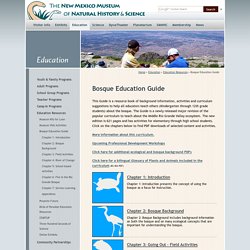
The Guide is a newly released major revision of the popular curriculum to teach about the Middle Rio Grande Valley ecosystem. The new edition is 621 pages and has activities for elementary through high school students. Click on the chapters below to find PDF downloads of selected content and activities. More information about this curriculum. Upcoming Professional Development Workshops Click here for additional ecological and bosque background PDFs Chapter 1: Introduction presents the concept of using the bosque as a focus for instruction.
Chapter 2: Bosque Background includes background information on both the bosque and on many ecological concepts that are important for understanding the bosque. Foreword By Cynthia G. Downloads Forward, Preface, and Acknowledgements (161kB PDF) Bosque Habitat. An introduction to evolution. An introduction to evolution The definition Biological evolution, simply put, is descent with modification.
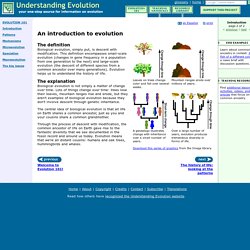
This definition encompasses small-scale evolution (changes in gene frequency in a population from one generation to the next) and large-scale evolution (the descent of different species from a common ancestor over many generations). Evolution helps us to understand the history of life. The explanation Biological evolution is not simply a matter of change over time. Lots of things change over time: trees lose their leaves, mountain ranges rise and erode, but they aren't examples of biological evolution because they don't involve descent through genetic inheritance.
The central idea of biological evolution is that all life on Earth shares a common ancestor, just as you and your cousins share a common grandmother. Straight line graph in Microsoft Excel 2010 with slope and intercept evaluated. Why Is California So Important? Ask students: Who elects the president of the United States?
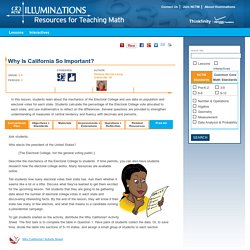
[The Electoral College, not the general voting public.] Describe the mechanics of the Electoral College to students. If time permits, you can also have students research how the electoral college works. Tell students how many electoral votes their state has. To get students started on the activity, distribute the Why California? If using computers with Internet access: There are many websites that provide the most current census data on population and the number of electoral votes for each state. If computers are available, but not an Internet connection: Have students record the data in the Electoral College Spreadsheet. If computers are unavailable: Have students gather the data as a collaborative group and record it in the table.
As students begin collecting the data, monitor their progress. Question 2 should be completed individually to allow students to make their own observations of the data. Bear Facts - Species - Giant Panda. DENSITY MEASUREMENT PRACTICE: FIND THE DENSITY OF EVERYDAY OBJECTS. Www.wowmuseum.com/documents/BITWTeachersGuide.pdf. Microhydropower Systems. If you have water flowing through your property, you might consider building a small hydropower system to generate electricity.
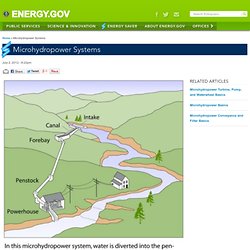
Microhydropower systems usually generate up to 100 kilowatts of electricity. Most of the hydropower systems used by homeowners and small business owners, including farmers and ranchers, would qualify as microhydropower systems. But a 10-kilowatt microhydropower system generally can provide enough power for a large home, a small resort, or a hobby farm. A microhydropower system needs a turbine, pump, or waterwheel to transform the energy of flowing water into rotational energy, which is converted into electricity.
Our page on planning a microhydropower system has more information. How a Microhydropower System Works Hydropower systems use the energy in flowing water to produce electricity or mechanical energy. A microhydropower system can be connected to an electric distribution system (grid-connected), or it can stand alone (off-grid). Impulse Turbines Learn More. Output From Industrial Wind Power. What is a megawatt or a megawatt-hour?
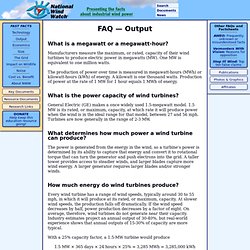
Manufacturers measure the maximum, or rated, capacity of their wind turbines to produce electric power in megawatts (MW). One MW is equivalent to one million watts. The production of power over time is measured in megawatt-hours (MWh) or kilowatt-hours (kWh) of energy. A kilowatt is one thousand watts. Production of power at the rate of 1 MW for 1 hour equals 1 MWh of energy.
What is the power capacity of wind turbines? General Electric (GE) makes a once widely used 1.5-megawatt model. 1.5 MW is its rated, or maximum, capacity, at which rate it will produce power when the wind is in the ideal range for that model, between 27 and 56 mph. What determines how much power a wind turbine can produce? The power is generated from the energy in the wind, so a turbine’s power is determined by its ability to capture that energy and convert it to rotational torque that can turn the generator and push electrons into the grid. Iowa.sierraclub.org/06wqs/ecosystems.pdf. KidWind Advanced Wind Experiment Kit Nacelle. Poor conditions at Willowdale Farm Village. Www.wowmuseum.com/documents/BITWTeachersGuide.pdf. Can We Live Without Electricity? Over half of all Indians without electricity. India: The Power of Pine Needles.